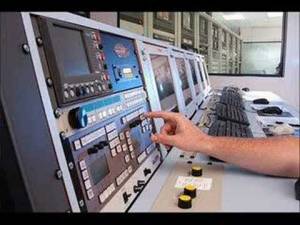Wireless Industry Proposes BAS Channels for Broadband
WASHINGTON—CTIA - The Wireless Association has told the FCC it should consider spectrum now being used for the Broadcast Auxiliary Service , or the 2GHz band channels TV broadcasters operate on for internal backhaul, as “the most effective and sensible candidate band” for wireless broadband use. The broadcast industry naturally disagrees.
“Policymakers on a bipartisan basis have recognized that there is an urgent need for more spectrum to meet the explosive growth in consumer demand for mobile broadband services and to accommodate the development of an increasingly mobile and interconnected world,” the CTIA said. “Thankfully, Congress has taken positive action to help the Commission to alleviate this looming crunch for capacity through the adoption of bipartisan legislation. The 2012 Spectrum Act is a legislative landmark that presents the Commission both with great opportunity and great responsibility.”

The group is asking the FCC to identify, allocate and auction 15MHz of spectrum for broadband use. The legislation mandates it must be complete by February 2015.
“CTIA believes that the Commission should closely consider spectrum from the Broadcast Auxiliary Service (BAS) as a most effective candidate band,” the document said. “This spectrum band is below 3 GHz, is contiguous and adjacent to current allocations, and would allow pairing in a readily achievable fashion. CTIA is not aware of any other spectrum bands as well-positioned as this band to meet all the key principles for mobile broadband spectrum that could be paired with the specific 15 MHz identified by NTIA (National Telecommunications and Information Administration), and that could be put to timely use and generate significant revenues through a competitive bidding process.
“While there currently are issues involved with making this band available for commercial mobile use, CTIA believes that the Commission should begin a process to work to address those issues,” it continued.
The NAB, representing TV stations across the country that rely on the BAS spectrum for their daily operations, fired back at the CTIA proposal.
“If CTIA’s request were not such a serious threat to public safety, it would be amusing,” said NAB spokesman Dennis Wharton. “Every day, local TV stations use broadcast auxiliary spectrum (BAS) to provide breaking coverage of devastating storms, tornadoes, hurricanes and wildfires. If Superstorm Sandy demonstrated anything, it is that broadcast television serves as a lifeline in times of emergency, where cellphone/wireless architecture has failed.
The professional video industry's #1 source for news, trends and product and tech information. Sign up below.
“Just a few years after broadcasters returned 108MHz and one-third of our BAS spectrum for wireless purposes — and just one day after comments were filed on incentive auctions to repurpose more TV airwaves to wireless — CTIA is demanding even more spectrum from broadcasters. NAB will work with the FCC to identify appropriate spectrum that meets the requirements of the statute without jeopardizing the safety of the American public.”
